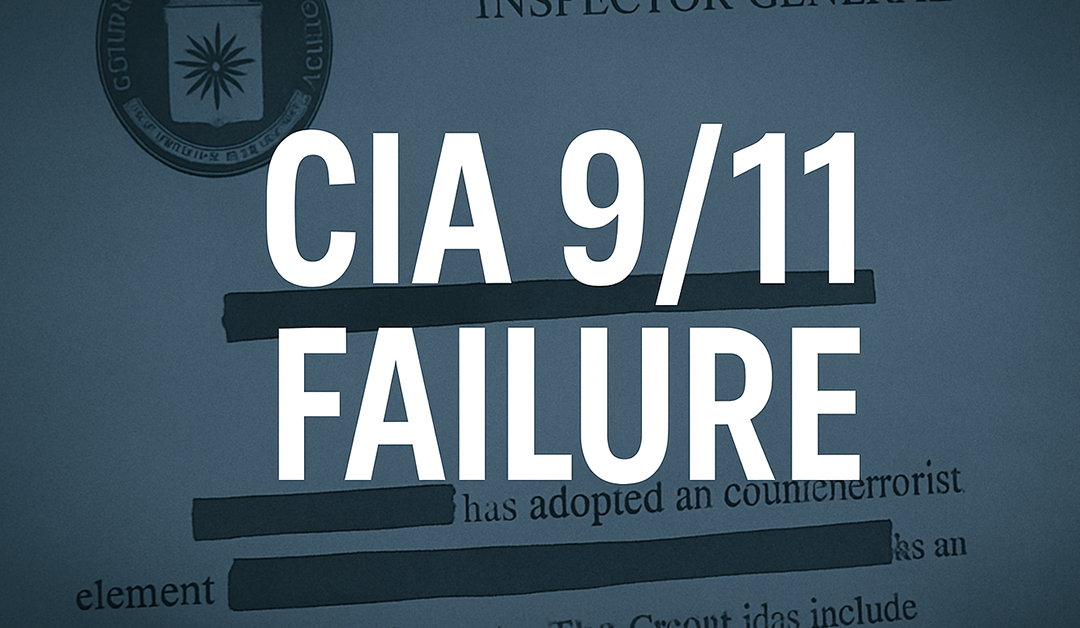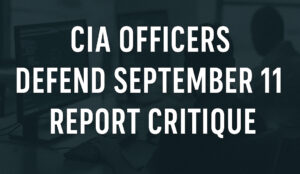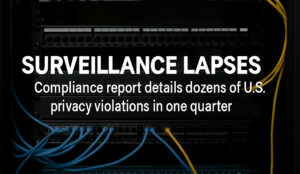In 2004, the CIA’s own Office of Inspector General quietly released a 480-page report examining what went wrong in the months-and years-leading up to the September 11 attacks.
The verdict was damning.
The CIA had intelligence on Al-Qa’ida operatives, including several who would later hijack planes on 9/11.
It had details on their movements, their aliases, and even that they had visas to enter the United States. But the Agency failed to act, failed to share, and failed to stop them.
"The Agency and its officers did not discharge their responsibilities in a satisfactory manner."
📁 Known Threats, Ignored Signals
The OIG report details repeated failures to:
-
Pass intelligence on two future hijackers-Khalid al-Mihdhar and Nawaf al-Hazmi-to the FBI
-
Properly use the watchlist system to flag high-risk individuals
-
Act on a flood of urgent, often specific intelligence reports naming Al-Qa’ida operatives, safehouses, and plotters
By early 2000, the CIA had learned that al-Mihdhar had a U.S. visa and al-Hazmi had entered the country.
No alert was issued.
No follow-up surveillance.
No formal FBI notification.
They lived freely in the U.S. for over a year.
🧍 Individual vs Institutional Failure
The report highlights systemic dysfunction rather than rogue inaction. Officers failed to coordinate not out of malice, but out of confusion, overwork, and poorly defined roles.
"There was a lack of a comprehensive strategy for fighting terrorism."
Numerous analysts believed others were already taking action. Internal processes were not clearly defined.
As one internal memo put it: "Nobody was in charge."
🛰️ Informants, Intercepts, and Missed Opportunities
The CIA had:
-
Human intelligence from Afghan sources
-
Intercepts from foreign partner services
-
A growing body of evidence linking Osama bin Laden to direct operational planning
Yet this intelligence was never fully centralized, rarely escalated, and in several cases, not translated in time to be useful.
The OIG described multiple "missed operational opportunities"-many of which could have led to early disruption of the plot.
🚫 Why No One Was Punished
Despite clear failures, the OIG report resulted in no disciplinary action.
-
Names of responsible officers were redacted
-
Some were even promoted after the events
-
Senior CIA leaders argued that "hindsight bias" made fair evaluation impossible
Director George Tenet defended his tenure, claiming the post-9/11 scrutiny didn’t reflect the "context of the time." But the report’s conclusion remains:
"Agency performance fell well short of what was expected."
🧾 What the Report Actually Changed
While Congress passed the Intelligence Reform and Terrorism Prevention Act later in 2004, and the CIA claimed to restructure its counterterror operations, the report was never fully released to the public in its original form.
Even the redacted version wasn’t made public until years later, following pressure from the 9/11 Commission and investigative journalists.
Most Americans never saw the details.
🕳️ A Quiet Admission of Systemic Collapse
This was not a whitewash. But it wasn’t accountability either.
The CIA OIG report provides the Agency’s clearest internal confirmation that its processes failed catastrophically-and that those failures were never corrected in time.
No agent was charged. No systemic overhaul followed immediately.
And the opportunity to prevent one of the most devastating terrorist attacks in history was lost in a haze of bureaucratic confusion.






